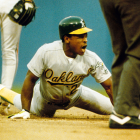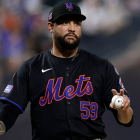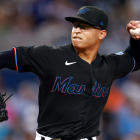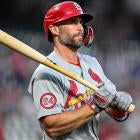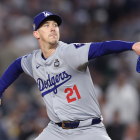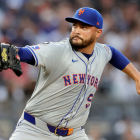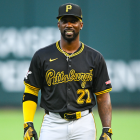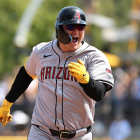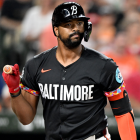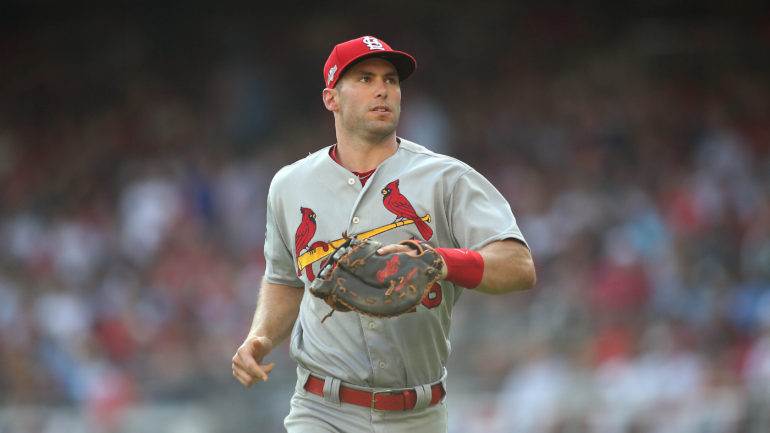
The Cardinals last season snapped a playoff "drought" of three years, as they claimed a division title for the 14th time in franchise history. Much of that roster returns for the 2020 season, and the Cardinals will once again have legitimate designs on the postseason. However, the NL Central, while not crowded with great teams, is certainly crowded with potential contenders. The Cardinals, Cubs, Brewers, and Reds all have the roster talent to win the division. For those counting, that's 80 percent of the NL Central.
The Cardinals didn't spend much this past offseason, but they'll hope to ride pitching depth and enjoy further development from some young hitters. Now let's have a closer look.
Win total projection, odds
- 2020 Sportsline projection: 31-29
- World Series odds (via William Hill Sportsbook): 30/1
- 2019 record: 91-71, won NL Central
Projected lineup
- Kolten Wong, 2B
- Matt Carpenter, DH
- Paul Goldschmidt, 1B
- Paul DeJong, SS
- Yadier Molina, C
- Dexter Fowler, RF
- Tommy Edman, 3B
- Tyler O'Neill, LF
- Harrison Bader, CF
Bench: OF Dylan Carlson, INF/OF Brad Miller, INF/OF Rangel Ravelo, OF Lane Thomas, C Matt Wieters
This is a question mark moving into 2020. Last season, the Cardinals ranked just 10th in the NL in runs scored and 11th in OPS. Yes, Busch Stadium is a bit of a pitcher's environment, but that doesn't explain away all those struggles. Of particular concern is that the Cards ranked 12th in the NL in home runs and allowed one of their more reliable homer threats -- Marcell Ozuna -- to sign with Atlanta.
Vital to the Cardinals' offensive hopes in 2020 is how they sort out the outfield situation and whether Goldschmidt is capable of a rebound season. We'll address both those matters in further depth below. Also, Yadier Molina, who soon turns 38, showed major signs of decline at the plate in 2019. Hoping for improvement from a high-mileage catcher of his age is perhaps unwise. Can he produce enough to continue being manager Mike Shildt's No. 5 hitter? Elsewhere, don't be surprised if Carpenter and Ravelo form a reasonably productive DH platoon.
Lineup-adjacent observation: If Edman does emerge as the regular at third, then this could be the best infield defense in baseball.
Projected rotation
- Jack Flaherty, RHP
- Dakota Hudson, RHP
- Adam Wainwright, RHP
- Miles Mikolas, RHP
- Carlos Martinez, RHP
They've got a certifiable young ace at the front end in Flaherty and plenty of depth. The fifth starter's job isn't settled, but consider Martinez to be the frontrunner (more on that in a moment). Injuries are always a concern, and in the Cardinals' case so are possible regression for Hudson and age-related decline for Wainwright. Fortunately for them, there's depth to spare.
Projected bullpen
- Closer: Giovanny Gallegos, RHP
- Setup: John Gant, RHP; Andrew Miller, LHP
- Middle: Ryan Helsley, RHP; Tyler Webb, LHP; Alex Reyes, RHP, LHP Brett Cecil, RHP Junior Fernandez
- Long: Daniel Ponce de Leon, RHP; Kwang-hyun Kim, LHP
Last season, the Cardinals ranked third in the NL in bullpen ERA and second in bullpen FIP. Shildt has plenty of weapons to attack opposing hitters from either side, and as we'll note below there's enough strength in numbers for him to quick-hook starters and play match-ups as needed.
Storylines
The outfield situation
The Cardinals have a big decision to make in the outfield before Opening Day. Harrison Bader, thanks largely to his elite fielding, figures to have a clear path to the job in center. The outfield corners, however, are a bit less settled. Shildt is a fan of Dexter Fowler, and that likely means that Fowler, coming off a bounce-back season in 2019, may do the heavy lifting in right. That leaves left field and likely a battle between Tyler O'Neill and top prospect Dylan Carlson.
On the one hand, the Cardinals probably need to see what they have in O'Neill. The 25-year-old has excellent raw power (and elite exit velocity), but the problem has been his lack of selectivity at the plate. While the sample size is vanishingly small, O'Neill did show an improved batting eye during spring training prior to the shutdown. Given the loss of Ozuna to free agency, they could use a guy like O'Neil and his 30-homer potential in the lineup. The question is whether he'll be able to run an adequate OBP at the highest level (and improve his recognition of same-side breaking stuff).
As for Carlson, he's one of the top position prospects in all of baseball, and the Cardinals could badly use his offensive upside in the lineup. Age 21 and a former first-rounder, he's coming off a 2019 season in which he slashed .292/.372/.542 with 62 extra-base hits and 20 stolen bases in 126 games at the Double- and Triple-A levels. He capped that off with a .905 OPS in 39 spring plate appearances prior to the shutdown. There's little doubt that Carlson is ready to produce at the highest level, but the question is whether the current logjam will allow him to do that.
Given that Fowler's rebound in 2019 really amounted to mere adequacy, the two corner spots should probably go to O'Neill and Carlson. As noted, though, Shildt's understandably high regard for Fowler means he's probably going to be a regular instead of a fourth outfielder/DH. So it comes down to O'Neill and Carlson. Right now, we'll say that the Cardinals commit to seeing what O'Neill can do, but this one's up in the air until further notice. One compelling path forward is to make Carlson the regular in left and then platoon Fowler and O'Neill in right.
Pitching depth
Given the high-leverage nature of each regular season game -- that's the nature of things when you go from 162 to just 60 -- and the expectation that pitchers may be a bit behind their hitting counterparts because of the interrupted spring, the 2020 season could be one defined in part by pitching depth. The Cardinals figure to grade out well in this regard.
The delayed start of the season allowed righty Miles Mikolas to return from a strained flexor tendon, and now he'll be ready for the start of the season. That means it's likely a competition between Carlos Martinez and lefty free agent addition Kwang-hyun Kim for the final spot in the rotation. Both have experience working out of the bullpen, but Martinez has a stated preference to return to starting duty. That's probably how the Cardinals will open the season.
Should someone in the rotation succumb to injury or ineffectiveness, the Cardinals can turn to impressive depth within the system. Names like Daniel Ponce de Leon, Austin Gomber, John Gant, Genesis Cabrera, and Alex Reyes have the potential to step in. Then, of course, there's whoever loses the battle for the fifth starter job, Martinez or Kim.
The outgrowth of having rotation depth, especially in a season such as this one, is that the overflow improves the bullpen depth. Those names above join the bullpen core above as 60-man player pool options. As well, former closer Jordan Hicks -- he of the biggest fastball in MLB -- is now recovered from Tommy John surgery. While he's going to open the regular season on the IL, he'll be available as a late-inning option for the Cardinals at some point probably early in the season.
All this depth means Shildt can attack opposing hitters with fresh arms from all sides, especially during the expanded roster period at the outset. That's a potential edge for St. Louis.
The Goldy question
While Paul Goldschmidt was quite productive in his first season with the Cardinals in 2019 -- 113 OPS+ -- he was well the below the standards he established in Arizona (career OPS+ of 145 coming into 2019). Goldschmidt turns 33 in September, so it's reasonable to be concerned that he's entered his decline phase. That his five-year, nine-figure extension hasn't yet kicked in adds to those concerns from the team standpoint.
The bad news for the Cardinals and Goldschmidt is that his batted ball indicators, which can sometimes suggest better days ahead for otherwise struggling hitters, don't help his case. Consider:
- Goldschmidt in 2018 ranked 33rd in MLB in average exit velocity but slipped to 77th last season.
- He ranked 66th in max exit velocity in 2018 but just 122nd in 2019.
- In terms of the number of "barreled" balls, Goldschmidt slipped from eighth in MLB in 2018 to 27th last season.
As well, his hard-hit rate continued a pattern of decline, and his slugging percentage against fastballs dropped by almost 100 points. In matters related, his walk rate was a career low in 2019 as pitchers challenged him more often in the zone.
Goldschmidt in the past has been a truly great hitter, and decline is rarely linear for such producers. It's entirely possible that he rebounds in 2020. Maybe in 2019, he had an underlying injury or was pressing for much of his first season with a new team. If, however, this is the first step of genuine, age-related decline, then it's bad news for the Cardinals' hopes in 2020 and beyond. Suffice it to say, the upcoming season will be a critical one for Goldbird.










